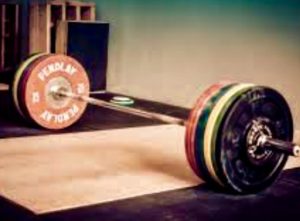Are you worried about varicose vein risk factors? Have you been hitting the gym, and you're worried about getting varicose veins from lifting weights? If so, this is the read for you! After all, most of us work out to look and feel better. So you want to know if your workout is hurting your vein health!
And worrying about weightlifting is actually legitimate. If you've ever done squats with weights, you may have noticed your leg veins become prominent. So, you may be concerned that the effect will become permanent. And that's why we're telling you everything you need to know about lifting weights and varicose veins. (Along with other varicose vein risk factors.) 
Varicose veins are visible through your skin because of their enlarged size or darker color. These veins change color or bulge due to a build-up of excess blood, and that blood builds up because of problems with your valves.
But let’s backtrack a bit and talk about blood flow. Your veins have one important job. They carry blood from your extremities back towards your heart. When they’re working properly, the valves in your veins help blood fight gravity. They do so by closing, preventing the blood from flowing back down to your legs and feet.
But when those valves aren’t working properly (a condition known as venous reflux) the blood can travel back downwards, allowing for the pooling that causes those prominent varicose veins to show up.
A major contributing factor is genetics—if your mom or dad had varicose veins, you are more likely to experience the same problem. But other factors can play a role in vein disease. And these include advanced age, pregnancy or menopause, blood clots and obesity.
Job related hazards, like extended sitting or standing, can also contribute to this issue. As such, teachers, nurses and hairdressers may have a higher risk than those in other professions. But even your diet plays a role, since some unhealthy foods can impact your circulation. Plus, constipation increases your risk for varicose veins, so foods that take a toll on digestion can hurt your vein health.
And that's not all you need to worry about. Because, as it turns out, staying in one position for too long takes a toll on your veins, too. In fact, it can lead to the same kind of blood pooling we see in people with malfunctioning valves.
Before we return to discussing weight lifting's impact on your vein health, let's discuss gender as a varicose vein risk factor. For several reasons, women are more likely than men to develop this symptom of vein disease. Why is that the case?
First, only women get pregnant. (For now, at least. Who knows what medical and scientific advances we'll see in the future?) And that matters, because pregnancy is one of the largest varicose vein risk factors, as your growing fetus and increased blood volume put lots of pressure on the valves inside your veins.
Then, there are more recent concerns that increase gender-based risk. During the COVID lockdowns, women were disproportionately chosen as the ones to stay home with out-of-school kids. And this contributed to sedentary lifestyles along with weight gain, both of which are varicose vein risk factors.
Now, exercise could actually help minimize the effects of gender risks for varicose veins. But only if you do so wisely. Which brings us back to talk of weightlifting and varicose veins.
Here’s the good news: it doesn’t! Your veins may appear more prominent while you’re lifting weights, but it’s unlikely to be a permanent issue. In fact, regular exercise can actually decrease your chances of getting varicose veins because it helps boost your circulation.
Of course, there are exceptions to this rule: lifting very heavy weights. If you are an extreme weight lifter, you may put enough pressure on your muscles and veins to cause valve damage. But, this type of problem would take time to set it, and there are easy steps you can take to prevent exercise-related vein damage.
The first step is to use proper form when lifting heavy weights, and to work with a spotter for additional safety. It’s also important to incorporate rest days into your training schedule, and it may be worthwhile to wear compression socks during lifting sessions to help protect your veins and improve your blood flow.
Of course, if you already have varicose veins and the symptoms are causing you discomfort during workouts, you may need to discuss cutting back with your doctor. But the important thing to remember is this: working out won’t cause you to experience venous reflex; it can’t make you develop varicose veins. And as long as you discuss your training plans with your vein doctor, it may even help you manage existing issues, while lessening certain symptoms of varicose veins!
What does all that mean for you? Well, if weight lifting is part of your current or future exercise plans, don't wait until your vein health takes a hit. Be proactive, and schedule a consultation with our Houston and Dallas area vein specialists, so you can stay safe and train appropriately!

Scheduling
Please contact our dedicated specialists to schedule a consultation today.
2025 Texas Endovascular. All rights reserved. Website Design by Healthcare Success